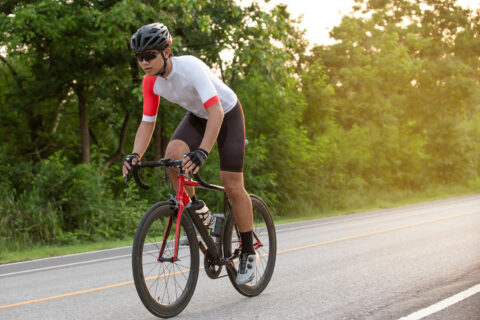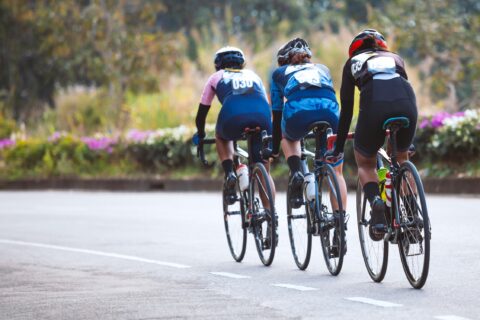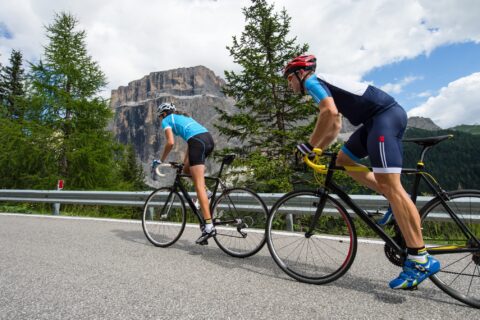Video Transcript
Mountain Bike Intervals by Rob Pickels
0:12
Hey everyone, I’m Rob Pickels, and today I’m going to tell you about mountain bike intervals.
Everyone I know got into the sport of mountain biking because it’s fun and challenging. But oftentimes, whether you’re training for a race, a big adventure, or to compete against your friends, we can lose sight of what got us into this sport to begin with. For me, mountain bike ranges from, big cross country adventures to enduro with my friends, with a little lift, surf thrown in for fun. When I dream about mountain bike intervals, I take my cross country bike to the same zone that I ride my bigger bike, except I dialed down the technicality, so I can focus on the workout and on the efforts.
Dr. Seiler and his intervals
00:47
If you know anything about Fast Talk Labs is that we’re a fan of Dr. Seiler’s work, and if you know one thing about Dr. Seiler, well it should be that he’s a Texan living in Norway. But if you know two things about Dr. Seiler, it’s that he’s a fan of making his intervals hard. That’s perfect for mountain biking, because oftentimes, the terrain demands that you’re working real hard just to keep moving. Based on Dr. Seiler research, we know that four sets of four to eight minute intervals with about two minutes of rest can lead to big improvements in performance measures like wattage at VO2 max, power at four millimoles of lactate, and time to exhaustion. These work and restorations also line up nicely with effort seen while riding. Hard at the climb for five to ten minutes, and then recovering on the descent.
What to expect out of this workout
01:34
The key to this workout is maintaining the highest workload you can for the duration of the intervals. For heart rate, I’d expect you to be between threshold and max. On the RPE scale, you’d be about a seven to eight out of ten. If you have power on your mountain bike, I’d aim for about 120% of FTP, depending on your strengths and your interval lengths. This means that the first effort should be hard, but you’re intentionally holding back a little. During the second interval, you’re going to be proud of yourself for doing solid work. On the third interval, you might be questioning life choices. On the last interval, you’re gonna be ready to make a deal with the devil. But, if you play your cards right, you’ll be able to see it through to the end.
Tips for riders who avoid mountain bike workouts
02:14
I know a lot of riders who avoid doing workouts on their mountain bike, and I get it, it’s hard to pull off and the data is often messy.
Here are 5 tips on how to do mountain bike workouts right:
- Ride in an area that you know well. This is important so that you can focus more on the effort that you’re giving than trying to navigate or read the trail.
- It’s important that you know how long it’s going to take you to ride your course. Most riders do not have long enough climbs that would allow them to do all of these intervals in series as they ratchet up the mountain. Most climbs are too steep to get proper recovery between intervals. Therefore, a loop including a climb and a descent is often the best and most fun way to accomplish this workout.
- Pick a course that’s fun, but one that you can apply steady power on. Flat terrain that’s overly turning will cause you to break and accelerate repeatedly, and that’s not the point of this workout. At the same time, a technical climb that requires some big power is not going to meet your goals either.
- For the descent, it should be fun, but also something that you can recover on. A technical descent that pushes your ability will make it difficult to recover and can turn dangerous as fatigue sets in later in the workout.
- Run grippy tires. Often I’ll run tires with a bit more grip than I do for racing. This allows me to focus more on myself and the work I’m doing instead of controlling a bike that’s on the edge of its traction.
They key to success when doing mountain bike intervals
03:50
A key to success with this workout is breaking it into its two main parts: the effort and the recovery. Also if you begin thinking about the last effort during the first, your motivation is going to drop.
As I set out, I’m focused on the here and now.
- How are my legs feeling?
- Am I tapping out a good tempo?
- I try to keep my head up, my eyes focused on the trail, and my body position good.
As I come to terrain that causes me to work a little harder than intended, I try to limit the power spike instead of charging up and then settling back into my pace. Nearing the top of the climb, when I’m about 30 seconds out, I’m doing two things. Physically, I’m making sure my form and my cadence are good despite my fatigue. Mentally I’m already preparing to switch to the descent. What do I need to be prepared for in the first 30 seconds of the downhill, the time when I know I’m still in a fog from the effort before. The moment I hit the descent I enter recovery mode. I tried to control my breathing, slow it down taking some deeper breaths. My body posture is supple but also resting. I’m doing what’s necessary to navigate the terrain but, I’m not putting in the effort needed to ride the downhill as fast as possible. My eyes are scanning ahead to read the terrain to see where I can relax, and where I need to ride more active. Once I have a little recovery in me, I tried to focus on practicing skills, riding smooth without unnecessary braking, carrying speed through corners, and always focusing on body position. I also tried to fit in a little fun. Too quickly the descent is over my fun needs to wait until I haul myself back up to the top for another round. So, I roll smoothly back into my loop suddenly in to find my rhythm for the next repetition. Riding bikes is fun, and our workout should reflect that. With some careful planning, you can take some great training principles out onto the trails that you love to ride.



